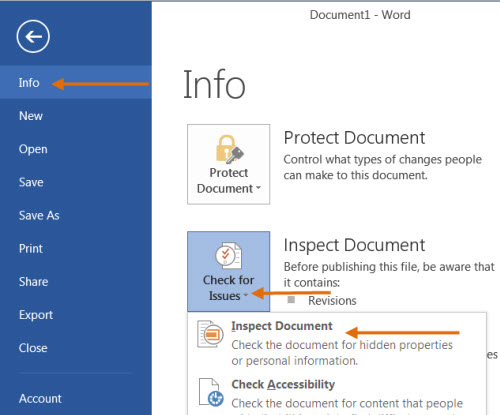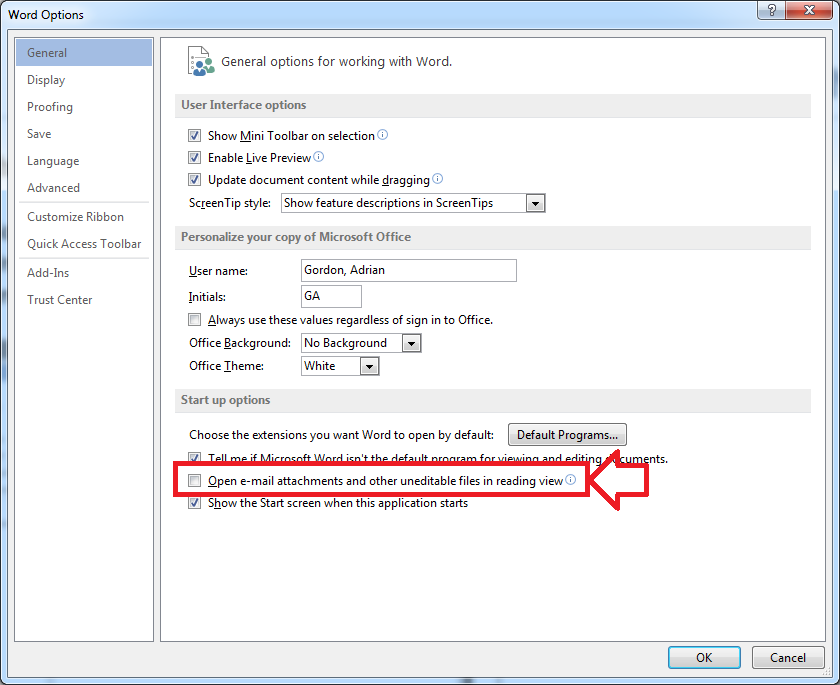

- Disable word document protected view update#
- Disable word document protected view full#
- Disable word document protected view download#
- Disable word document protected view windows#
Once replication has occurred, you will be able to use these new policies in your Group Policy Management Console. Disable word document protected view full#
In Server 2012 R2, these will be at %systemroot%\SYSVOL_DFSR\sysvol\.hennepin.mn.us\Policies\PolicyDefinitions Remove Full Document Protection from Word without Password If on one hand the document you have is password-protected and you don't have the password to open it, you need a far more advanced way to recover the password and unlock the document.
 After consulting with group policy admins on both the workstation and server side, this combined folder is now ready to be copied to the Central Store on a domain controller at %systemroot%\sysvol\domain\policies\PolicyDefinitions. robocopy \\server\share\folder1 \\server\share\folder2 /XO /S Combine these two folders, keeping the latest version of the.
After consulting with group policy admins on both the workstation and server side, this combined folder is now ready to be copied to the Central Store on a domain controller at %systemroot%\sysvol\domain\policies\PolicyDefinitions. robocopy \\server\share\folder1 \\server\share\folder2 /XO /S Combine these two folders, keeping the latest version of the. Disable word document protected view windows#
Remember, the two steps above need to be done on the latest versions of both Windows Server and Windows. adml files and copy these to the newly-created en-US folder Create a subfolder of this new folder named en-US. 
Disable word document protected view update#
For example, \\Server\Share \Windows 8.1 Update 1 Server 2012 R2 Copy these to a new folder at \\Server\Share\CentralStore_Adds.
On the latest version of Windows and on the latest version of Windows Server, search for. adml files, go instead to %systemroot%\winsxs adml files for installed components on the local computer. %systemroot%\PolicyDefinitions stores the. Ive made sure Office updates are turned on. 
Ive disabled Protected View in Word (see attached image). adml policies on the latest Windows and Windows Server computers themselves. I cant seem to disable Protected View in Word 2016 for a user that I support when they open a Word attachment in an Outlook message. It does sometimes take them awhile to post the new policies.
Disable word document protected view download#
If you can find an up-to-date download link, use that. adml files can be downloaded from Microsoft. Where %systemroot% is generally C:\Windows (was %systemroot%\sysvol\domain\policies\PolicyDefinitions in Windows Server 2008),
On the domain controllers, the central store is located at %systemroot%\SYSVOL_DFSR\domain\Policies\PolicyDefinitions. adml files when a new operating system comes up if you want to use the new policies. The Central Store must be updated with new. From the Options window, click the entry for Trust Center. The files that are in the Central Store are replicated to all domain controllers in the domain. First, you’ll want to review the settings for Protected View. admx files that are in the Central Store. The domain Central Store is a file location on domain controllers that is checked by the Group Policy tools. Press Shift-F5, which causes the cursor to return to the previous editing position the cursor won't go anywhere if the document is empty, but the keystroke will be recorded in the macro anyway.Regarding updating the Central Store for Policies, this is the process I use.Īctive Directory Central Store for policies On the View tab, click Macros, then Record Macro. It's easiest to do this with an empty document on screen, but you perform these steps with any document open. Microsoft hasn't documented the fix for this, but the information in the next paragraph was confirmed by a Microsoft representative.Ĭreate a new AutoOpen macro by performing the following steps in Word 2010. One source of trouble for an AutoOpen macro is Word's new Protected View, because when you open a document in Protected View, Word won't be able to run the AutoOpen macro, and will display an annoying error message. I use an AutoOpen macro that opens a document with the cursor in the place it was when I last edited the file, not at the very top of the file, which is where Word normally puts the cursor when you open a document. One convenient way to enhance Word is to create an AutoOpen macro that runs on every document you open. Here's a high-tech tip for advanced users of Word 2010.








 0 kommentar(er)
0 kommentar(er)
